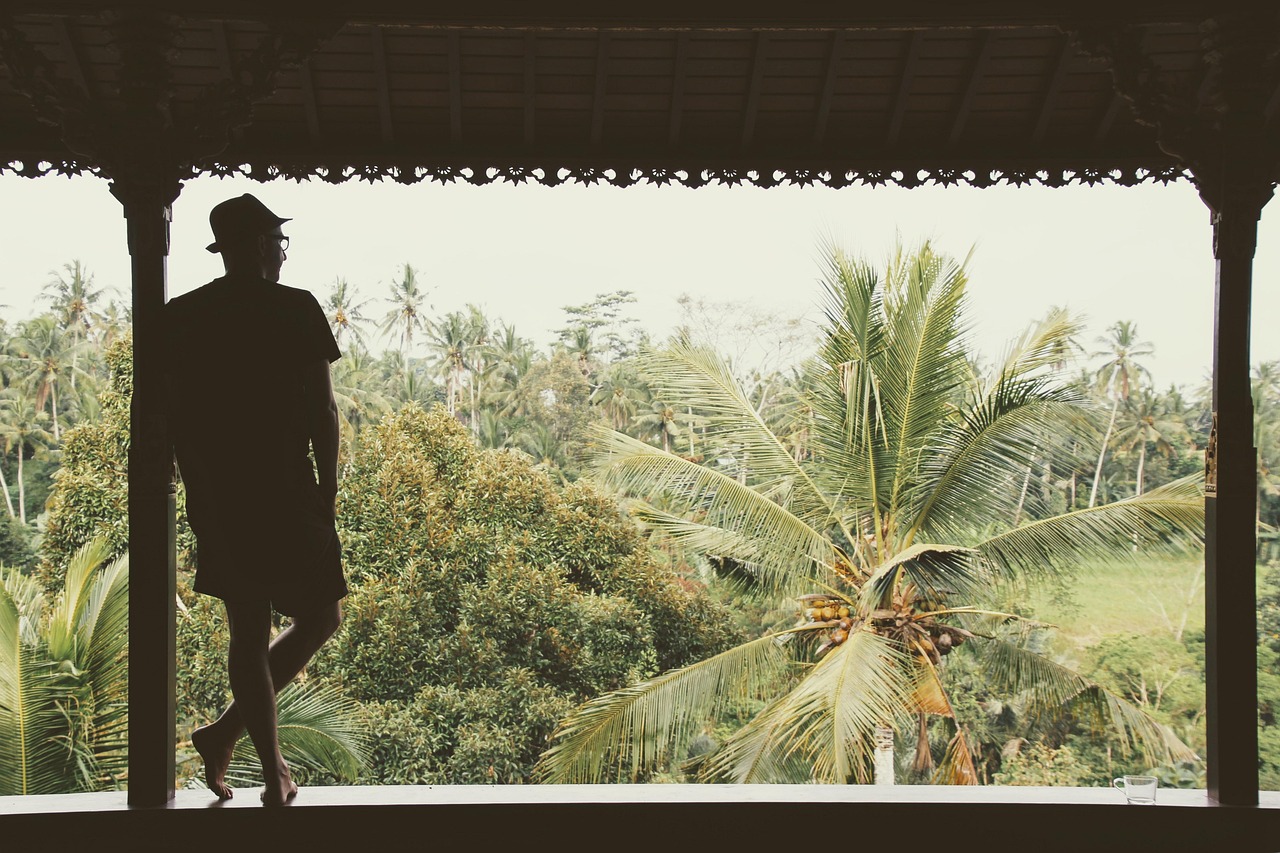Ubud, the cultural and spiritual heart of Bali, is a place where time seems to slow down. Surrounded by lush rice terraces, ancient temples, sacred rivers, and vibrant art communities, this highland town offers a completely different experience from Bali’s coastal crowds. Here, life unfolds at a more mindful pace — incense drifts from family shrines, gamelan music echoes through the air, and the scent of rain on rice paddies fills your senses.
It’s a haven for those seeking authenticity, creativity, and peace amid nature’s beauty. Whether you’re wandering through centuries-old temples, exploring the jungle on hidden trails, or immersing yourself in yoga and art, Ubud promises a journey that touches both body and soul. In this guide, we’ll uncover the 10 best things to do in Ubud for an unforgettable trip — experiences that will connect you deeply with Bali’s heritage, spirituality, and timeless charm.
10 Best Things to Do in Ubud for an Unforgettable Trip

Below is a detailed, experience-rich guide to the 10 best things to do in Ubud — handpicked to capture the essence of what makes this highland town truly extraordinary.
1. Explore the Sacred Monkey Forest Sanctuary
Few places in Ubud embody its mystical character as vividly as the Sacred Monkey Forest Sanctuary (Mandala Suci Wenara Wana). Located at the heart of the town, this lush jungle is both a natural reserve and a spiritual site. It is home to over 1,200 Balinese long-tailed macaques and three ancient Hindu temples that date back to the 14th century.
Walking beneath the dense canopy, you’ll find yourself surrounded by giant banyan trees draped in vines, moss-covered statues, and intricately carved guardian figures. The temples — Pura Dalem Agung Padangtegal, Pura Beji, and Pura Prajapati — are active places of worship where locals come to perform rituals and offer canang sari (small floral offerings).
The monkeys are mischievous but fascinating to observe. They symbolize harmony between humans and nature in Balinese philosophy. To enjoy the visit safely, avoid feeding them or holding loose items, as they are clever enough to unzip bags or snatch sunglasses.
Why it’s unforgettable: The fusion of spirituality, nature, and wildlife in a single mystical setting makes the Monkey Forest a living temple of life itself.
Also read: Where to See Orangutans: A Guide to Ethical Encounters
2. Wander Through the Tegallalang Rice Terraces
The Tegallalang Rice Terraces, just 20 minutes north of central Ubud, are among Bali’s most photographed landscapes — and for good reason. These cascading emerald fields reflect the ingenious subak irrigation system, a cooperative water management practice dating back to the 9th century and recognized by UNESCO as a cultural heritage of humanity.
Each terrace is meticulously carved into the hillsides, creating a natural amphitheater of shimmering green. Early morning or late afternoon offers the best light for photography, when the sun paints soft gold highlights across the paddies.
You can walk the narrow trails between the terraces, meet local farmers, or relax at one of the cafes overlooking the valley. For the more adventurous, there are swings and zip lines that let you soar above the fields for a panoramic view.
Travel tip: Bring small change for entrance donations and be respectful of farmers working in the fields — this is both their livelihood and their heritage.
Why it’s unforgettable: Tegallalang represents Bali’s living connection between spirituality, agriculture, and art — a landscape cultivated as carefully as a temple.

3. Visit Tirta Empul
Just outside Ubud in the village of Tampaksiring lies Tirta Empul, one of Bali’s most sacred temples dedicated to Vishnu, the Hindu god of water. Founded around 960 AD, it’s famed for its holy spring whose waters are believed to purify the body and spirit.
Visitors come here not only to admire the architecture but also to participate in a melukat purification ritual. Dressed in traditional sarongs, devotees enter the cool pools and bow beneath a line of stone spouts, each representing a different spiritual cleansing.
The temple complex includes courtyards, shrines, and bathing pools fed by crystal-clear springs bubbling from the ground. The experience is meditative — the sound of trickling water, the scent of incense, and the hum of prayers create a sense of timeless serenity.
What to know: Visitors can join the ritual, but it’s essential to be respectful — dress modestly, follow the locals’ lead, and refrain from entering areas reserved for prayer.
Why it’s unforgettable: The act of bathing in holy water at Tirta Empul isn’t just a ritual; it’s a moment of surrender — a spiritual renewal amid one of Bali’s most sacred sites.
4. Stroll Through Campuhan Ridge Walk
For travelers seeking peace and natural beauty, the Campuhan Ridge Walk is a must. This scenic trail follows a narrow ridge that separates the Sungai Wos and Sungai Cerik valleys, offering sweeping views of lush hills, palm trees, and golden sunlight spilling over the landscape.
The walk begins near the Campuhan Bridge and the small temple of Pura Gunung Lebah, one of Ubud’s oldest spiritual landmarks. The trail itself stretches roughly 2 kilometers (about 1.2 miles) one way, making it perfect for a leisurely morning or sunset walk.
Unlike more tourist-heavy attractions, Campuhan Ridge feels refreshingly quiet. It’s a favorite among photographers, joggers, and couples seeking a romantic stroll. At the end of the ridge, you can stop at small cafes tucked between the fields for fresh coconut water or a smoothie bowl.
Best time to go: Early morning for cool temperatures and soft light. Late afternoon is also magical but can be warm.
Why it’s unforgettable: Campuhan Ridge captures the soul of Ubud — simple, spiritual, and beautifully intertwined with nature.
5. Discover Balinese Art at Ubud’s Museums and Galleries
Ubud has long been known as the artistic heart of Bali, attracting painters, sculptors, and dancers since the early 20th century. The town’s creative energy is palpable in its galleries, artisan workshops, and vibrant art museums.
Start at the Agung Rai Museum of Art (ARMA), which showcases both traditional and contemporary Balinese works as well as performances of gamelan music and dance. The Neka Art Museum offers a journey through Balinese painting styles influenced by European artists who lived in Ubud, such as Walter Spies and Rudolf Bonnet. The Blanco Renaissance Museum, perched on a hill overlooking Campuhan, houses the flamboyant works of the late Don Antonio Blanco, one of Bali’s most eccentric artists.
Beyond museums, you’ll find small studios and artisan markets filled with handcrafted batik, wood carvings, and jewelry — perfect for taking home a piece of Ubud’s creative soul.
Why it’s unforgettable: Ubud’s art scene isn’t confined to museums — it’s woven into daily life, from temple carvings to shadow puppets, making the town a living gallery of Balinese culture.
6. Take a Balinese Cooking Class
To truly experience a culture, one must taste it — and there’s no better way than through a Balinese cooking class. Ubud is the epicenter of Bali’s culinary education, offering immersive classes in local compounds and organic farms.
Most classes begin with a guided visit to the Ubud Traditional Market, where you’ll learn about tropical ingredients — galangal, lemongrass, kaffir lime, chili, and turmeric — and how locals source their produce. Then, you’ll move to an open-air kitchen to prepare classic Balinese dishes such as sate lilit (spiced minced fish skewers), lawar (coconut and vegetable salad), and the iconic nasi campur.
Cooking here isn’t just about following recipes; it’s about understanding the philosophy behind Tri Hita Karana — the Balinese concept of harmony between humans, nature, and the divine.
Why it’s unforgettable: A Balinese cooking class turns a meal into an act of cultural immersion, blending taste, ritual, and storytelling into one delicious experience.
7. Experience Yoga and Wellness Retreats
Ubud has evolved into one of the world’s top wellness destinations, drawing yogis, healers, and spiritual seekers from across the globe. Its tranquil setting and spiritual energy make it ideal for personal renewal.
Places like The Yoga Barn, Radiantly Alive, and Intuitive Flow offer classes in yoga, meditation, breathwork, and sound healing. Whether you’re a beginner or an advanced practitioner, these studios welcome all with open hearts.
Beyond yoga, Ubud is also home to numerous holistic healing centers offering Ayurvedic treatments, reiki, crystal therapy, and detox programs. The combination of ancient wisdom and lush natural surroundings creates a deeply restorative environment.
Why it’s unforgettable: In Ubud, wellness isn’t a luxury — it’s a lifestyle. Each breath, each stretch, and each mindful moment feels like an offering to your own spirit.
8. Watch a Traditional Balinese Dance Performance
Every night, as the sun sets over Ubud’s temples, the air fills with the sound of gamelan — the shimmering metallic rhythm that forms the heartbeat of Balinese culture. Dance is not merely entertainment here; it is a sacred art that tells stories from the Ramayana and Mahabharata, the great Hindu epics.
The Ubud Palace (Puri Saren Agung) is the most popular venue for evening performances, where elaborately dressed dancers move with intricate precision, their gestures and eye movements conveying deep emotion. Other venues, like Pura Dalem Taman Kaja and ARMA Museum, also host stunning shows such as the Kecak Fire Dance, Legong Dance, and Barong Dance.
Why it’s unforgettable: Balinese dance connects you to the island’s spiritual heartbeat — an artistic ritual that bridges the human and divine realms in a blaze of color and rhythm.
Also read: Eco Friendly Orangutan Tours for Conscious Travelers
9. Visit Goa Gajah
Steeped in history and mystery, Goa Gajah (the Elephant Cave) is one of Ubud’s most significant archaeological sites. Built in the 9th century, it served as both a sanctuary and meditation site for Hindu and Buddhist monks.
The entrance, carved into a menacing stone face, looks like a demon’s mouth. Inside, the cave is small and dimly lit, containing ancient statues and a shrine to Ganesha, the elephant-headed deity. Outside, a serene bathing pool, carved fountains, and lush gardens complete the sacred atmosphere.
Goa Gajah isn’t about grandeur — it’s about feeling the layers of time, faith, and energy that have shaped Bali for centuries.
Why it’s unforgettable: The combination of mythology, archaeology, and spirituality gives Goa Gajah an atmosphere of quiet awe — a window into Bali’s ancient soul.
10. Explore the Ubud Market and Palace
No trip to Ubud is complete without wandering through its bustling Traditional Art Market (Pasar Seni Ubud). Located across from the Ubud Palace, the market is a sensory feast — colorful textiles, handwoven baskets, wooden carvings, and fragrant spices fill every corner. Bargaining is part of the experience, done with a smile and gentle humor.
After shopping, cross the street to visit the Ubud Palace (Puri Saren Agung). Once home to Ubud’s royal family, it remains a cultural center where daily life blends with heritage. Its courtyards and ornate stone carvings reflect the artistic mastery of Balinese craftsmanship.
Why it’s unforgettable: The market and palace embody the living rhythm of Ubud — a perfect balance between tradition, creativity, and community.
Additional Tips for an Unforgettable Ubud Experience
1. Best Time to Visit
The ideal time to visit Ubud is during the dry season (April to October) when days are sunny and rice terraces are vibrant green. The rainy season (November–March) brings lush landscapes but also heavy afternoon showers.
2. Getting Around
Ubud is compact, but attractions are scattered. Rent a scooter if you’re confident on the road, or hire a local driver for a full-day exploration. Walking is enjoyable within the town center, where cafes, boutiques, and temples line the streets.
3. Cultural Etiquette
Always dress modestly when visiting temples (sarongs are often provided). Never point your feet at altars, and avoid stepping over offerings placed on the ground. A simple smile and a quiet demeanor go a long way in showing respect.
4. Sustainability
Support local artisans, eat at farm-to-table restaurants, and choose eco-conscious accommodations. Ubud’s beauty depends on mindful tourism that respects both culture and environment.
Final Thoughts
Ubud is not just a destination — it’s a state of being. It invites you to slow down, to reconnect with yourself and the world around you. Here, the spiritual and the everyday intertwine seamlessly: incense wafts from family shrines as farmers tend rice fields; artists carve wood with the same devotion as monks chanting mantras.
Whether you come for healing, adventure, or inspiration, Ubud has a way of transforming every traveler who walks its paths. Its beauty is not loud or fleeting — it lingers in your senses long after you’ve left, in the smell of frangipani, the rhythm of gamelan, and the quiet grace of its people.
These 10 best things to do in Ubud are only the beginning. For those willing to look beyond the surface, Ubud offers an experience not just of Bali, but of life itself — raw, sacred, and profoundly unforgettable.

Alfath Dewantara is the manager of Jungle Inn Hotel in Bukit Lawang and a leading expert in Bukit Lawang eco-travel. With years of experience in sustainable tourism, he is dedicated to preserving the region’s rich biodiversity while providing authentic jungle experiences for visitors.




